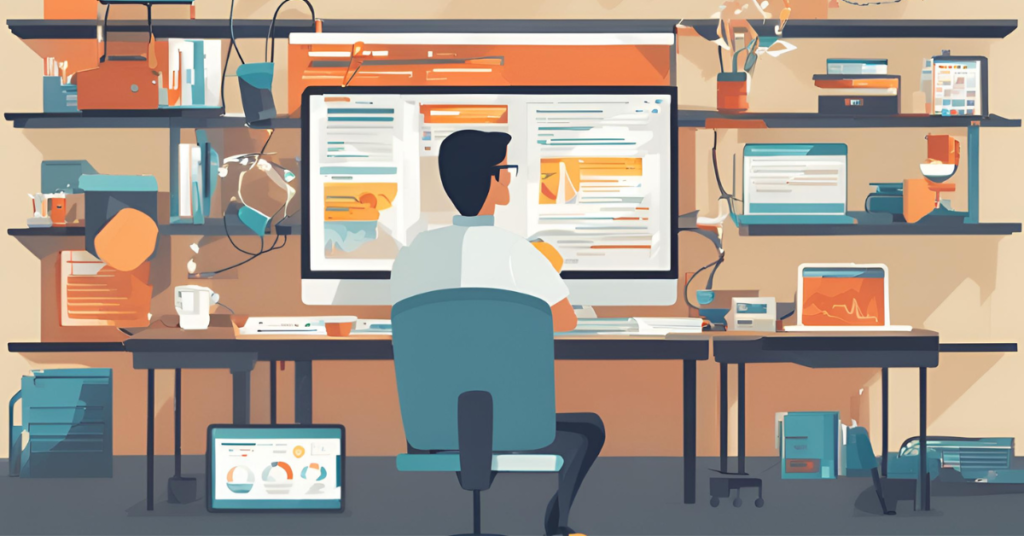
Career in software testing can be both exciting and challenging. As the demand for quality software grows, the need for skilled testers is greater than ever. But how do you get started, and what does the journey look like? This detailed Software Testing Career Roadmap is designed to guide students and aspiring QA professionals through each stage of building a successful career in software testing.
What is Software Testing?
Software testing is the process of evaluating software applications to ensure they meet the required quality standards. The goal is to identify bugs, defects, or any issues that could affect functionality, usability, or performance. In the broader sense, software testing aims to deliver a smooth and error-free user experience.
Why Choose a Career in Software Testing?
Software testing offers a stable, rewarding career path with room for growth, learning, and specialization. Here are some key reasons to consider this career:
- High demand for testers: Companies are releasing software at rapid speeds, increasing the need for quality assurance.
- Diverse career opportunities: From manual testing to automation, performance testing, and security testing, you can specialize in various fields.
- Stepping stone to other tech roles: Software testers often transition to roles such as developers, QA leads, or product managers.
Key Skills to Develop as a Software Tester
To succeed in software testing, you’ll need both technical and soft skills. Here’s a breakdown of what you should focus on:
| Skill | Description |
|---|---|
| Attention to Detail | Ability to spot even the smallest defects or inconsistencies in software functionality. |
| Analytical Thinking | The skill to analyze software and think of all possible scenarios where issues could arise. |
| Basic Coding Knowledge | Familiarity with languages like Java, Python, or JavaScript helps in understanding the code. |
| Problem-Solving | Capable of troubleshooting issues and working with developers to fix defects efficiently. |
| Communication | Clear reporting of issues and effective collaboration with development teams. |
The Software Testing Career Roadmap: Key Stages
1. Education and Foundational Knowledge
Start with the basics: understanding software development and quality assurance. While many testers come from technical backgrounds, a formal degree isn’t always necessary. What matters most is a good grasp of software development life cycles (SDLC), testing methodologies, and basic coding.
Suggested Learning Areas:
- Software Development Life Cycle (SDLC)
- Manual Testing Techniques
- Bug Tracking Tools (e.g., JIRA, Bugzilla)
- Test Case Creation
2. Entry-Level Roles: Functional Tester
Starting as a Functional tester is a great way to get hands-on experience in understanding how software behaves. You’ll learn how to create test cases, report bugs, and collaborate with developers to resolve issues.
Key Responsibilities:
- Running tests manually to identify bugs.
- Documenting test results and bugs found.
- Communicating with developers to fix defects.
Manual Testing Tools:
- JIRA
- Bugzilla
- TestRail
3. Transition to Automation Testing
As you gain more experience, the next logical step is to transition to automation testing. Automation testers write scripts to automate the testing process, improving the efficiency of tests, especially for large-scale projects.
Skills to Focus On:
- Learning automation tools (Selenium, Appium).
- Gaining proficiency in a programming language (Java, Python).
- Understanding frameworks like TestNG, JUnit.
| Manual Testing | Automation Testing |
|---|---|
| Time-consuming | Faster execution of repetitive tests |
| Human error-prone | Less prone to error due to automation |
| Best for exploratory and ad-hoc testing | Ideal for regression and performance testing |
| Requires less technical skill | Requires programming knowledge and tool expertise |
4. Specialization in Testing Fields
As your career progresses, you can choose to specialize in a specific testing field:
- Performance Testing: Focus on how well software performs under stress or load.
- Security Testing: Ensure the software is secure from vulnerabilities and attacks.
- Mobile Testing: Specialized in testing mobile applications.
- API Testing: Verifying that APIs work as expected and meet performance standards.
5. Advanced Roles: QA Lead, Test Manager, and Beyond
After gaining several years of experience and expertise, you can move into leadership positions. As a QA Lead or Test Manager, you’ll oversee testing teams, manage projects, and ensure the quality of large software releases.
Responsibilities of a QA Lead:
- Managing and mentoring testing teams.
- Creating test strategies and ensuring alignment with business goals.
- Collaborating with developers and product teams for efficient testing processes.
Future Career Paths:
- QA Lead
- Test Manager
- Product Manager
- DevOps Engineer
Tools Every Software Tester Should Know
Testing tools are crucial for both manual and automation testers. Here’s a breakdown of popular tools across different stages of testing:
| Tool | Category | Description |
|---|---|---|
| Selenium | Automation Testing | Open-source tool used for automating web browser interactions. |
| JIRA | Bug Tracking | Widely used tool for tracking bugs, issues, and managing agile projects. |
| Postman | API Testing | Powerful tool for API development, testing, and automation. |
| Jenkins | CI/CD Integration | Helps automate parts of the software development process via continuous integration. |
| TestRail | Test Case Management | Helps in managing test cases, plans, and tracking results. |
Tips for Building a Successful Software Testing Career
- Keep Learning: The world of software testing is constantly evolving. Stay updated with new tools, techniques, and trends.
- Network with Other Testers: Join testing communities, attend webinars, and participate in forums to share knowledge and learn from others.
- Get Certified: Certifications such as ISTQB (International Software Testing Qualifications Board) can boost your credibility and career prospects.
- Practice Regularly: Build projects and contribute to open-source software. Hands-on experience is invaluable.
Conclusion
A career in software testing offers a dynamic and fulfilling path. By following this Software Testing Career Roadmap, you can start with foundational knowledge, build practical skills, and specialize in areas that interest you. Remember to stay curious, keep learning, and adapt to new technologies—these are the keys to long-term success in the field of QA.
FAQs
- What qualifications do I need to become a software tester?
While a degree in computer science is beneficial, it’s not a strict requirement. What’s essential is a good understanding of software development and testing methodologies, which you can acquire through courses and certifications. - How long does it take to become an automation tester?
Transitioning from manual to automation testing can take anywhere from 6 months to a year, depending on your learning pace and the complexity of the tools. - What is the difference between manual and automation testing?
Manual testing involves humans performing test cases, while automation testing uses scripts and tools to execute tests, making it faster and more reliable for repetitive tasks. - Which testing tools should I learn first?
Start with bug-tracking tools like JIRA and basic manual testing tools like TestRail. As you advance, learn automation tools like Selenium. - Is certification necessary for a career in software testing?
While not mandatory, certifications such as ISTQB can enhance your resume and increase your job prospects.
By following this roadmap, you’ll be well-prepared to navigate the ever-evolving world of software testing and thrive in this exciting career path!
![]()
Subscribe to our Newsletter
Learn | Collaborate | Grow






